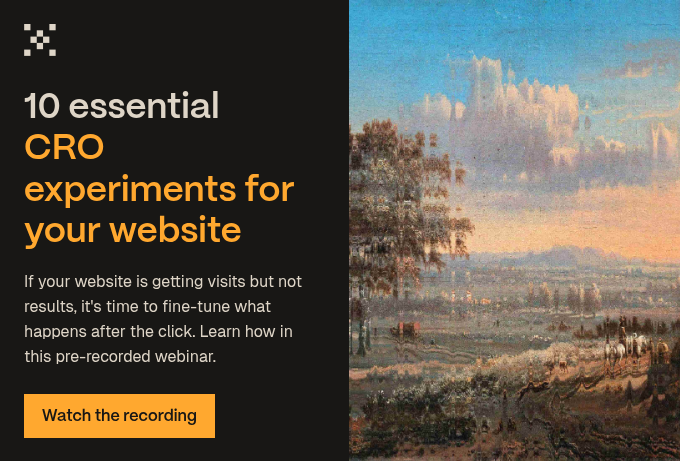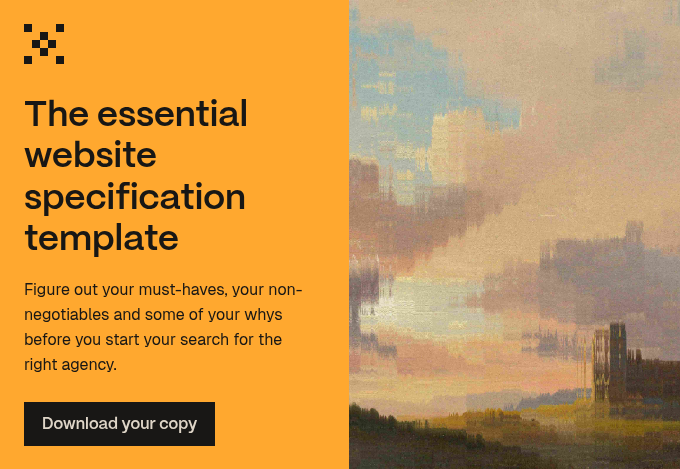Have you found that the pipeline from marketing of sales qualified leads has slowed to a dismal trickle? Are you trying to figure out why? Well, have you considered the user journey on your website?
Here at Articulate, we know a thing or two about websites. After all, we've just built ourselves a new one (in fact, we made a robot, too, but that's another story). We had a look at our own SQLs and discovered that only about 15-20 percent reached out to us for direct contact - the rest downloaded a guide or something similar as their first touchpoint.
So, we've written this checklist to help you create an effective user journey that turns more visitors into delighted customers.
1. Understand your users and build personas
Before you consider how to get your website visitor from A to B, work out who they are and what their needs are.
This is a process of understanding and constructing ‘buyer personas’. Building these personas will highlight the different kinds of value visitors might want from your website. In turn, your personas will be interested in different touchpoints, like the offer to download a free e-book or guide, and will reach out in different ways.
2. Map the phases of your user journey
To start mapping a user journey, look at the different phases of the buying journey they might be on. Then, it’s important to ensure you provide touchpoints and value for visitors at every stage of the buyer’s journey. The five stages are:
- Awareness
- Research
- Comparison
- Purchase
- Post-purchase support
3. Map and answer the concerns of your user at every point in your website
The different calls-to-action within your website need to answer the typical questions or objections users tend to have at each phase. Try to address their feelings, answer their questions and inspire them to move forward on their buyer’s journey.
For example, someone new to your site might be more inclined to download your ‘Data Security Checklist’, because it’s relevant to their needs and they’re researching ways to solve points of friction in their working life or business as a whole. Someone who has landed on the ‘contact’ page, however, is much more likely to raise their hand and is seeking a way to contact you directly.
4. Analyse touchpoints outside your website bringing you traffic
Website visitors arrive by different routes. They may have found you via social media or pay-per-click advertising; they may have read about you or had a recommendation from another of your clients.
Because website visitors can come from many places, it’s vital to ensure your website is optimised both for mobile and desktop, and that it’s easy to navigate. Then, no matter how familiar your visitors are with your brand – or on what platform they’re viewing your website – they’ll have a great experience.
5. Optimise and create new touchpoints within your website
Once you've mapped your user journey, the process of creating new (and improving existing) website touchpoints can begin. Consider using the following:
- Newsletter subscription bar. Get more newsletter subscribers by adding a subscription bar. Newsletter sign-up forms should be short and sweet so try to keep it to two fields only.
- Search bar. These add a layer of convenience for your visitors, helping them to quickly find what they want. They also gather user data enabling you to work out customer needs and how you can help.
- Pop-ups. Love ‘em or hate ‘em, pop-ups provide good conversion value. Sumo analysed nearly 1.75 billion pop-ups and found that 'the top 10 percent highest-performing ones averaged a 9.28 percent [conversion rate]’ and that 'the average conversion rate for all pop-ups is 3.09 percent'.
- CTA buttons. Optimise call-to-action buttons so they align with whichever stage of the user’s journey that a person is at. This might mean a link to a blog post if they’re at the start of the journey, or a ‘book a call’ CTA if they’re toward the end.
Revive your website’s user journey. Revive your business.
Optimising your website’s user journey is a good opportunity to learn more about your audience. And, when you get it right, a well-optimised user journey will help you convert more visitors into customers, so your business achieves meaningful growth.
However, Rome wasn’t built in a day, and this checklist will only take you so far. Building your user journey is only part of creating a mature marketing strategy that drives your business forward.
So, if you’d like a to see how your marketing is really going, so you can prioritise your next steps, download our free marketing matrix now.






